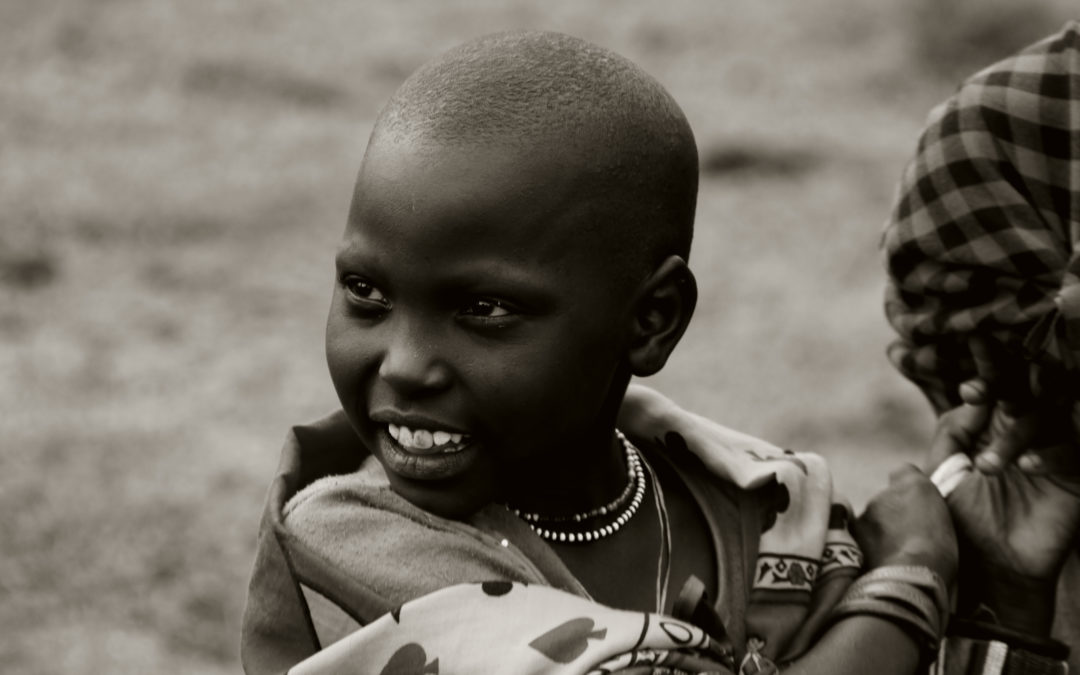Swahili lesson of the day:
Manyatta-House Boma-Family compound Ngombe-Cow Mbuzi-Goat
The Maasai people living in the Maasai Mara region today hail from a very old ethnic group of semi-nomadic people located in Kenya and northern Tanzania who have defied modern culture to retain their traditional way of life. Governmental programs have been instituted to encourage the Maasai to abandon their traditional lifestyle, but the people have continued their age-old customs.
Changing times have not left the Maasai untouched. Their culture is changing in some ways even though it remains deeply rooted in tradition in many ways. Traditional Maasai lifestyle revolves around their cattle and to a lesser degree, goats and sheep. Beef, blood and milk comprise the staples of their diet. The Maasai are renowned for their fierce love of their cattle. Maasia cattle in the area we visited are called Borans, a beautiful breed that is highly disease-resistant. I heard the Maasai described as “proud and kind, and fearless when it comes to their cattle.” The Maasai server at Leleshwa Camp, John, showed us the scars he received when he was 13 years old and guarding the cattle at night. A leopard entered the pen and without hesitation John jumped in, sword in hand. The fight cost the leopard its life and John several months in the hospital recovering from the injuries he sustained in the encounter.
The women build the manyattas out of cow dung, mud and some sticks and they last for up to 10 years. When manyattas get old, all of them in the boma are taken down and the village is rebuilt there or in another location. The manyattas are small and low to the ground. You crouch down to enter, pass a tiny penned-off area where young livestock are kept at night, and enter into the main room which has a cooking fire and several bed chambers on the sides. First your eyes will adjust to the near darkness and then they will water profusely because of all of the smoke and little ventilation.
A boma is set up in a large circle with cow and goat pens in the center and the manyattas forming the circumference of the circle. The Maasai are polygamists so there is a manyatta for each wife and her children; the husband will move from one wife’s manyatta to another. Bomas are comprised of several families. If a boma has 4 families and each husband has 4 wives, there will be 16 manyattas in that boma. Husbands have a minimum of 1 wife and there is no maximum. In addition to building and maintaining the manyattas, the women raise the children, clean the animal pens, make goods (especially jewelry) to sell, and prepare the food. Each boma has an elder patriarch who is well-respected by the community.
Another change that is affecting Maasai culture is that about 7 years ago free, compulsory education became law in Kenya. The Maasai are expected to send all of their children to school though formal education had never been a part of the culture. Apparently, school attendance by Maasai is not strictly observed, as needs of the family and animals take precedence. Many young boys can be seen from the road, usually dressed in bright shukas (the sheets wrapped around the body, one over each shoulder, and then a third over the top of them, the color red and plaids are prominent) herding goats and cattle. The men are the primary herders and they may leave the boma for long stretches of time with the livestock in search of better grazing grounds.
The Maasai practice both male and female circumcision. Girls marry at around age 15 and boys marry at around 22. Traditionally, marriage arrangements are made between parents and the groom to be, the girl has no say in the matter. They are considered property and are without individual rights as we understand them, in terms of making choices about the direction of their lives. This too is changing, if slowly. Awareness about female genital mutilation is spreading and expanded ideas about the roles and rights of women are being introduced to the younger generation going to school.
In a village called Oloiriri (a family name) that we visited, our guide told us about a young women who refused to marry her proposed spouse and when her parents tried to force the issue she said that she would run away or kill herself if she had to marry and that the only thing she wanted to do was to be a teacher. Even though she herself didn’t go to school, she now is a teacher in her community and apparently is well thought of. This situation is the exception, not the rule. In general, the women I met struck me as a hardy and happy bunch, busy and laughing.







Malcolm’s photos are gorgeous!! I visited the Masai when we went to Kenya 2 years ago! His photos and your descriptions bring me right back! I love it! And you have wonderfully filled in the details that I either missed or forgot. Keep it up!